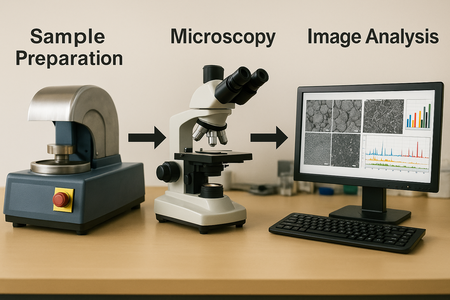
A standardized workflow description is essential for ensuring FAIR (Findable, Accessible, Interoperable, and Reusable) research data, as it enables the generation of data provenance. By digitizing workflow descriptions, numerical simulations and data analysis processes can be reproduced to validate results. Likewise, manual experimental workflows can be repeated, with logs of repeated trials compared to those of the original experiments to assess the impact of human involvement.
A unified approach to workflow documentation – covering numerical simulations, data analysis, and manual experiments — is particularly important in engineering disciplines, where collaborative and interdisciplinary research is the norm. Such projects demand a shared understanding and representation of workflows.
In collaboration with NFDI4Ing and its archetype Ellen, we are investigating the diverse needs of manual experimentalists, data scientists, and computational materials scientists. To accommodate varying levels of technical expertise, we aim to develop a three-tiered framework that integrates graphical user interfaces with source-code-based workflow representations into a common workflow description.
| Main requirements: - Extension of the Python Workflow Definition as common workflow format for simulation workflows to manual experiments and data analysis. - Format to support semantic description of steps, their inputs and outputs |
| Main Task Area: TA-WLE Other related Task Areas: TA-SAI |
| Possible connections within NFDI: NFDI4Ing |
| Material/Data: Workflow data from manual experiments and numerical simulations |
| Main Success Scenario: Agreement on a common workflow description for manual experiments, data analysis and numerical simulations and implementation of this description into one software tool at NFDI4Ing and NFDI-MatWerk |
| Added value for the MatWerk community: Ability to store workflows and their input and output data, Ability to compare workflows; Identifying differences in workflows |
As an initial test case, we will build upon the research and workflows developed in the previous funding period’s demonstrator, which focused on the experimental and numerical determination of Young’s modulus. This earlier work involved manual preparation of materials science samples, execution of experimental procedures, application of data science techniques for analysis, and numerical simulations to derive the material’s elastic properties.
To further assess the versatility and applicability of the common workflow description, we will integrate additional demonstrators by converting their research and workflow data into this standardized format. Planned contributions from MatWerk include a round-robin test demonstrator for serial sectioning and reconstruction, as well as a demonstrator focused on phase diagram development. We will also actively support and engage with other demonstrators within the NFDI4Ing initiative to ensure broad applicability across diverse engineering use cases.
NFDI-MatWerk
Funded by the Deutsche Forschungsgemeinschaft (DFG, German Research Foundation) under the National Research Data Infrastructure – NFDI 38/1 – project number 460247524.
NFDI-MatWerk
Funded by the Deutsche Forschungsgemeinschaft (DFG, German Research Foundation) under the National Research Data Infrastructure – NFDI 38/1 – project number 460247524.
Subscribe to our newsletter for regular updates about materials science topics!
After subscribing, you will receive an email from us with a confirmation
link.
Only after clicking this link your registration is completed.